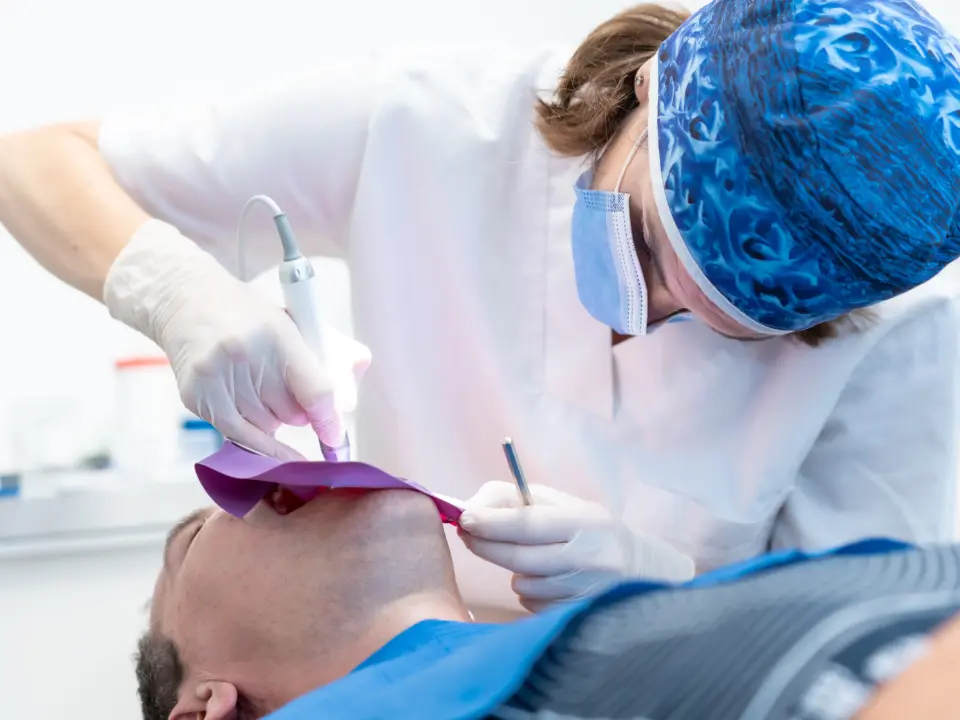
How to Spot the Signs of Teeth Grinding and Treat Bruxism
March 13, 2025
A Parent’s Guide to Teaching Kids Good Oral Hygiene Habits
April 11, 2025Losing a tooth—whether due to an accident, tooth decay, or gum disease—can be pretty unsettling. But, don’t worry. Staying calm and knowing what steps to take next can make a difference in saving that tooth or figuring out your next move. This guide will walk you through everything you need to know if you have a lost tooth.
Step 1: Stay Calm and Assess the Situation
First things first—take a deep breath. Yes, losing a tooth is a big deal, but freaking out isn’t going to help. If you’re in pain or bleeding, focus on stopping the bleeding and assessing the situation calmly.
- Check for bleeding. If there’s bleeding, try to control it. Gently bite down on a clean cloth or gauze, and apply gentle pressure to help stop the flow of blood. Keeping your head elevated can help slow the bleeding down.
- Look around. Take a quick look at the area where the tooth was lost. Are there any other teeth that seem out of place or damaged? If it’s not an adult tooth, it’s generally not as urgent, but still worth checking for injuries
Step 2: How to Handle the Lost Tooth
If the tooth that fell out is a permanent tooth, handling it properly is very important. You want to ensure it stays in good condition until you can get it to your dentist.
- Pick the tooth up by the crown. The crown is the top part of the tooth (the part that you can see when it’s in your mouth). Avoid touching the root, which is the part that goes into the gum—this is the delicate part, and handling it could damage the tissue.
- Rinse the tooth. Use milk, or saline to clean the tooth. Make sure not to scrub or wipe the tooth; just gently rinse off the crown and the root.
- Reinsert the tooth if possible. If you’re able to, try to gently place the tooth back into its socket. Bite down on a clean cloth to hold it in place, but don’t use too much pressure. The idea here is to give the tooth the best shot at reattaching.
- If reinserting isn’t possible, store it properly. If you can’t reinsert the tooth, store it in something that will keep it moist, like a milk container or saline solution. Your own saliva works, too, if you don’t have anything else.
Step 3: Contact Your Dentist Right Away
Time is of the essence when it comes to saving a lost tooth. The sooner you can get in touch with your dentist, the better the chances of saving the tooth or finding an alternative solution.
- Call your dentist. Let them know what’s happened. Your dentist will likely want to know exactly when the tooth was lost and any other details about the situation so they can prepare for your arrival. They may have an emergency number for you to call if it’s outside of regular hours.
- Emergency dentist if needed. If your regular dentist isn’t available or you need more urgent care, don’t hesitate to contact an emergency dental clinic. Most emergency dentists can help with a lost tooth and will do what they can to save it.
- Speed matters. Even if you’re not sure the tooth can be saved, don’t wait around. The dentist will assess the situation and decide if reimplanting the tooth is possible or other treatment options must be considered.
Step 4: Pain Relief and Comfort
While you’re on your way to the dentist, you might experience some pain or discomfort. Here’s how to manage it while you wait for professional care:
- Pain relief. Over-the-counter painkillers like ibuprofen or acetaminophen can help alleviate your pain. Just be sure to follow the dosage instructions carefully, and avoid taking anything that could irritate the gums or cause further discomfort.
- Gentle cleaning. If there’s any blood or debris in your mouth, rinse gently with warm saltwater. This can help clean the area and soothe the discomfort but don’t rinse too vigorously, as it might disturb the socket.
- Avoid chewing on the affected side. Try not to chew on the side of your mouth where the tooth was lost. Chewing can cause more pain and could lead to further damage or irritation in the area.
Step 5: Treatment at the Dentist
Once you’re at the dentist’s office, they’ll examine the situation and decide on the best course of action. Here’s what might happen next:
- Reimplantation. If the tooth is a permanent one and you’ve arrived within an hour, there’s a good chance the dentist will be able to reimplant it. They’ll clean the area, place the tooth back in the socket, and secure it with a splint for a few weeks to help it heal properly.
- Alternative treatments. If the tooth can’t be saved, don’t worry. Your dentist will discuss other tooth replacement options, such as dental bridges, dental implants, or dentures. These alternatives can help restore the function and appearance of your smile.

Aftercare
Once your dentist has reimplanted the tooth (or provided an alternative), there are a few things to keep in mind during the healing process:
- Follow your dentist’s instructions. Be sure to stick to any guidelines your dentist gives you regarding eating, brushing, and dental care. They may recommend soft foods for a while to prevent irritating the area.
- Keep the area clean. After a lost tooth is reimplanted, it’s important to maintain good oral hygiene to avoid infection. Gently brush around the area and rinse with salt water as recommended.
- Follow-up appointments. Your dentist will likely want to see you for follow-up visits to monitor how the tooth is healing or how your alternative treatment is progressing.
Losing a tooth can be a big ordeal, but with quick action, you give yourself the best chance to save it. Whether it’s a baby tooth or a permanent one, handling the situation calmly and following the right steps can make a huge difference in your oral health.
Contact us immediately if you are experiencing the loss of a tooth; we are here to help!



